DREAM KITCHENS



Solutions to help simplify procedures, save time, and reduce efforts

Digital Programs to help mitigate food safety risks, improve operational performance and optimize labor
& Surface Cleaner Sanitizer EPA-registered 2-in-1 no-rinse food contact cleaner sanitizer






On-Demand Digital Training Task-based training platform offering 24/7 access to your staff

Foodservice Intelligence Analytics platform that uses operational data to help drive smarter performance across your organization
1 Kills SARS-CoV-2 in 15 seconds; Norovirus, common cold and flu viruses in 30 seconds. EPA Reg. No. 1677-260.
2 Refer to label for complete use instructions.
3 When used according to label.
4 Versus five-gallon plastic pails, based on running 50-unit chain running 500 racks per day. Results may vary based on your specific set of circumstances.

10
28
Take a look at the photos and award winners from this year’s event.
Dream Kitchens
Chefs and designers dish on what their ideal workspace would and should look like.
DEPARTMENTS 18 Management
20
24
26
A transgender author, speaker and consultant gives us a lesson in Diversity, Equity & Inclusion.
Main Course
Miami-based Colombian chefs combine their heritage cuisine with Asian flavors.
On the Side
All about mofongo, the Puerto Rican staple with Afro-Caribbean roots.
Classical vs. Modern
ACF Chef Hannah Brinner presents a classic Filipino chicken adobo inspired by her mother’s recipe, plus a modern spin.
34 Health
A look at how operators are stepping up their safety and sanitation efforts in honor of Food Safety Month in September.



37
46
Segment Spotlight
These caterers got in the business for a work-life balance — and they’re fighting hard to keep it.
Pastry
ACF pastry chefs talk about their favorite tools in their kitchen pantries.
Editor-in-Chief
Amelia Levin
Creative Services Manager
David Ristau
Graphic Designer
Armando Mitra
Advertising and Event Sales
Eric Gershowitz
Director of Marketing and Communications
Alan Sterling
Contributing Editors
Amanda Baltazar, John Bartimole, Liz Barrett Foster, Kenya McCullum, Robert Wemischner
Copy Editor
Erica Demarest
American Culinary Federation, Inc. 6816 Southpoint Parkway Ste 400 Jacksonville, FL 32216 (800) 624-9458 (904) 824-4468 Fax: (904) 940-0741 ncr@acfchefs.net ACFSales@mci-group.com www.acfchefs.org
Board of Directors

President
Kimberly Brock Brown, CEPC®, CCA®, AAC®
Immediate Past President
Thomas Macrina, CEC®, CCA, AAC
National Secretary
Jeff Bacon, CEC, CCA, AAC
National Treasurer
Thomas Macrina, CEC, CCA, AAC
American Academy of Chefs Chair
Americo “Rico” DiFronzo, CEC, CCA, AAC
Vice President Central Region
Rajeev Patgaonkar, CEC, AAC
Vice President Northeast Region
Barry R. Young, CEC, CCE®, AAC, MBA
Vice President Southeast Region
Bryan Frick, CEC, AAC
Vice President Western Region
Greg Matchett, CEC
Executive Director
Heidi Cramb
The National
(ISSN 0747-7716), September/

American Culinary Federation, Inc. (ACF) and is produced six times per year by ACF, located at 6816 Southpoint Parkway, Ste 400, Jacksonville, FL 32216. A digital subscription to the National Culinary Review® is included with ACF membership dues; print subscriptions are available to ACF members for $25 per year, domestic; nonmember subscriptions are $40. Material from the National Culinary Review®, in whole or in part, may not be reproduced without written permission. All views and opinions expressed in the National Culinary Review® are those of the author and do not necessarily reflect the views and opinions of the officers or members of ACF. Changes of mailing address should be sent to ACF’s national office: 6816 Southpoint Parkway, Ste 400, Jacksonville, FL 32216; (800) 624-9458; Fax (904) 940-0741.
The National Culinary Review® is mailed, and periodical postage is paid at St. Augustine, Fla., and additional post offices.
POSTMASTER: Send address changes to the National Culinary Review®, 6816 Southpoint Parkway, Ste 400, Jacksonville, FL 32216.
All I can say about the 2022 ACF National Convention is: WOW!
It was SO INCREDIBLE to see such a huge and diverse group of people! There were so many budding chefs and students, veteran ACF members and chefs, plenty of newcomers and even those who haven’t been to convention in a while. It was amazing to have real conversations with and talk with membership — to hear people’s questions, comments and concerns. I’m already excited for next year’s convention in New Orleans!
The lineup of speakers was out of this world! Everyone had the same “problem”: There are so many great sessions, how do I pick between these two or three because I can’t get to them all? Some of my favorite presenters were Chef Elizabeth Falkner all day, and our closing keynote, Chef Jeff Henderson, whose speech garnered a standing ovation and moved us (and him) to tears! The two students he brought with him from his nonprofit, Chef Jeff Project, and introduced during the session had a truly life-changing experience, he told me after the event — so much so that he wants to get his students more involved in ACF! Read more about Chef Henderson and his nonprofit, Chef Jeff Project on page 42.
It's back-to-school time — not just for our culinary educators and students, but for all of us, too. The networking and learning don’t have to stop after convention. So many people ask me, “What does ACF have to offer besides certification and education?” I tell them, “So much!” How else can you meet people in your field from other parts of the country and even the world? How else can you stay connected and know who’s hiring and what’s trending and what’s not? The opportunities for us to exchange ideas and network with others is something that makes ACF truly special. I love the saying, “Who you know gets you in the door; what you know keeps you there.” ACF, of course, offers both.
That said, let’s keep on connecting and learning! Let’s learn more about diversity, equity and inclusion (p. 18). Let’s learn about trending Latin-fusion styles (p. 20) and about must-have pastry tools (p. 46) (I can’t live without my 12-inch serrated knife). Finally, let’s learn how to feed our populations better. People have made a bigger jump toward healthier lifestyles in the past two years, likely because of the pandemic. Many of us want to eat what’s good for our bodies. As chefs, it’s our job to figure out the best ways to prepare that food so we can keep our customer base (and ourselves!) healthy, happy and satisfied.
I’m ready to finally, finally get more back to normal and plan ahead for events and gatherings. That includes competitions. Already I’m seeing an uptick in interest, and we can’t wait to announce some exciting new changes we’re making for this year and next year heading into the 2023 ACF National Convention in NOLA. More info coming soon!
In the meantime, let’s keep that awesome, post-convention mojo going! Let’s go!
Kimberly Brock Brown, CEPC, CCA, AAC National President, American Culinary FederationContact

Lo único que tengo para decir sobre la Convención Nacional de la ACF 2022 es… ¡WOW!
¡Fue INCREÍBLE ver un grupo tan grande y diverso de personas! Había tantos nuevos chefs y estudiantes, miembros y chefs veteranos de la ACF, muchos recién llegados e incluso algunos que no habían asistido a la convención en mucho tiempo. Fue increíble tener conversaciones reales y hablar con los miembros: escuchar sus preguntas, comentarios e inquietudes. ¡Ya tengo ganas de que llegue la convención del próximo año en Nueva Orleans!
¡Los oradores fueron realmente excepcionales! Todos tuvieron el mismo "problema": con tantas charlas tan buenas, ¿cómo elijo entre estas dos o tres si no puedo asistir a todas?
Algunos de mis oradores favoritos fueron la chef Elizabeth Falkner, que realizó presentaciones durante todo el día, y nuestro discurso de clausura a cargo del chef Jeff Henderson, que recibió una ovación de pie y nos conmovió (tanto a nosotros como a él mismo) hasta las lágrimas. Los dos estudiantes de su organización sin fines de lucro, Chef Jeff Project, a quienes trajo y presentó durante la sesión, tuvieron una experiencia que realmente les cambió la vida. ¡Después del evento, el chef me dijo que la experiencia había sido tan transformadora que quería que sus estudiantes participasen más en la ACF! Lea más sobre el chef Henderson y su organización sin fines de lucro, Chef Jeff Project, en la página 42.
Es tiempo de volver a las aulas, no solo para nuestros educadores y estudiantes culinarios, sino también para todos los demás. La creación de redes y el aprendizaje no tienen por qué detenerse después de la convención. Mucha gente me pregunta: "¿Qué tiene para ofrecer la ACF además de la certificación y la formación?" ¡Y yo les digo que mucho! ¿De qué otra manera podemos conocer a colegas de otras partes del país e incluso del mundo? ¿De qué otra manera podemos mantenernos en contacto y saber quién está buscando nuevos chefs y cuáles son las últimas tendencias de la industria? Las oportunidades que tenemos para intercambiar ideas y trabajar en red con otras personas es algo que hace que la ACF sea realmente especial. Me encanta el dicho, "Los contactos te ayudan a entrar, pero el conocimiento te ayuda a quedarte". La ACF, por supuesto, ofrece ambas cosas.
Dicho esto, ¡sigamos colaborando y aprendiendo! Aprendamos más sobre diversidad, equidad e inclusión (pág. 18). Aprendamos sobre los últimos estilos de fusión latina (pág. 20) y las herramientas de repostería imprescindibles (pág. 46) (No puedo vivir sin mi cuchillo dentado de 12 pulgadas). Finalmente, aprendamos cómo alimentar mejor a nuestras poblaciones. Las personas han dado un salto más grande para comenzar a adoptar estilos de vida más saludables en los últimos dos años, probablemente debido a la pandemia. Muchos de nosotros queremos alimentarnos con cosas que nos hagan bien al cuerpo; como chefs, es nuestro trabajo descubrir las mejores formas de preparar esa comida para que podamos mantener a nuestra base de clientes (¡y a nosotros mismos!) saludables, felices y satisfechos.

Finalmente llegó el momento. Estoy lista para volver a la normalidad y planificar eventos y reuniones. Eso incluye competencias: ya estoy viendo un aumento en el interés, y estamos ansiosos por anunciar algunos cambios nuevos y emocionantes que estamos haciendo para este año y el próximo rumbo a NOLA. ¡Próximamente les haremos llegar más información!
Mientras tanto, ¡mantengamos ese increíble ímpetu que nos trajo la convención!
¡Adelante!
Kimberly Brock Brown, CEPC, CCA, AAC Presidente Nacional, American Culinary FederationVisit WeAreChefs.com, the official content hub for the American Culinary Federation, for stories and news about ACF members, industry and menu trends, recipes and more.

Join Certified Master Chef Tim Bucci CMC, CCE, as he shares his insight on charcuterie – the craft and preparation of meat products such sausages, terrines, galantines, ballontines, pate, confit and cured meats.
Certified Master Chef Daryl Schular’s Culinary Training Program

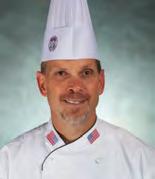
Learn about this ACF Chef’s programs based in the Atlanta metro area and in Milwaukee, and how the programs helping both young people and the communities at large.
Miami Chef Cesar Zapata leveraged the advantages and low barrier to entry that pop-up concepts provide in order to build his nowthriving restaurant business.


Each month, we highlight a different ingredient in the ACF’s Online Learning Center. Visit the center at acfchefs.org/IOTM to complete a quiz and earn one hour of continuing education credit toward ACF certification and recertification.
The Culinary Insider, ACF’s biweekly newsletter, offers ACF news and links to recent articles, plus information about upcoming events, certification, member discounts, competitions, contests and much more. Sign up at acfchefs.org/tci.
Follow the ACF on your favorite social media platforms:


@acfchefs
@acfchefs
@acf_chefs
@acfchefs
@acf_chefs
American Culinary Federation
Check out ACF’s Online Learning Center. There you’ll find NCR quizzes, videos of educational sessions from ACF events, practice exams for certification and more. Visit learn.acfchefs.org to get started and earn CEHs.
When posting your delicious creations on Instagram, tag #ACFChefs or send to @acf_chefs and we’ll repost our favorites here and online!

Soft and delicate, with a slightly sweet, milky flavor, BelGioioso Burrata is made with hand-crafted Fresh Mozzarella filled with Stracciatella, a mix of soft mozzarella shreds and sweet cream.



Enhance your menu by creating a deluxe Caprese salad with spooned sections of Burrata beside ripe tomatoes and fresh basil, drizzled with extra virgin olive oil. Or enrich your pizza or pasta by topping with a garnish of this fresh, creamy cheese just before serving.
Available in 2 oz., 4 oz. and 8 oz. Burrata balls, 4 oz. balls with Black Truffles, and 8 oz. and 1 lb. Burrata Filling (“Stracciatella”).



For more info and samples, please contact: foodservice@belgioioso.com


877-863-2123

belgioioso.com/Foodservice



The 2023 ACF National Convention will be held July 17-19, 2023, at the Ernest N. Morial Convention Center in New Orleans. Be part of the biggest annual gathering of chefs, culinary students and foodservice professionals in the country! Full registration includes a program badge with access to all one-hour seminars and cooking demonstrations, general sessions, the trade show featuring an array of products and exhibitors, networking breaks, meals and social functions — including the President’s Grand Ball, which wraps up the jam-packed week. Registrants will also earn continuing education hours (CEHs) for attending the convention. More information and a link to register will be posted at acfchefs.org/events.
Celebrate ACF’s Childhood Nutrition Day on Oct. 16 and help spread awareness during the entire month about the need for education about proper nutrition and obesity issues. Since the campaign’s launch in 1995, thousands of chefs across the nation have participated in events within their local communities to feed hungry children and foster and promote awareness of proper nutrition. Help raise the awareness: Post your healthy kid-friendly recipes on social media, prepare a healthy dish on Facebook Live or Zoom or partner with a local school and offer to host a virtual demo. Don’t forget to tag @ACFChefs and share your virtual posts and events with chefandchild@acfchefs.net to be a part of the impact. To learn more, visit acfchefs.org/ChildhoodNutritionDay.
In “Bread Head: Baking for the Road Less Traveled,” Chef Greg Wade of Chicago’s Boka Restaurant Group explores the new bread renaissance (on sale Sept. 27).
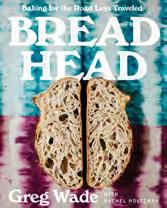
James Beard Award–winner Amy Thielen showcases joyful cooking for others in ”Company: The Radically Casual Art of Cooking for Others” (on sale Nov. 1).

“Conversations Behind the Kitchen Door: 50 American Chefs Chart Today’s Food Culture” is Chef Emmanuel Laroche’s collection of dialogues with awardwinning chefs from various backgrounds, sharing their personal experiences of where and why food culture is where it is today (on sale Nov. 8).

Chef David Carachure, CSC, executive chef for Center Stage Catering, Inc., in Rocky Mount, Virginia, and Chef Ted Polfelt, CEC, CEPC, CCA, AAC, a member of ACF Culinary Team USA, have both been nominated for “Best Chef of Roanoke VA” by The Roanoke Times after two rounds of voting. Winners will be announced Sept. 18.
Moraine Valley Community College honored its first group of students to be named certified culinarians by the ACF at a reception held in the college’s Table 67 restaurant. Each recipient was awarded a special diploma and a patch from the ACF to wear on his or her chef’s jacket. ACF Chef Dean Eliacostas, program coordinator for the school’s culinary arts program, worked on the accreditation process. Moraine Valley is one of only six colleges in Illinois and the only community college in Cook County to have a culinary arts program accredited by the ACFEF.
The ACF Caxambas Chapter of Southwest Florida donated $5,000 raised from a recent event to World Central Kitchen, Chef Jose Andres’ nonprofit organization that provides meals in the wake of climate, community and humanitarian crises.
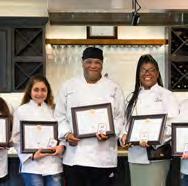
At SkillsUSA Nationals, held in June in Atlanta, dozens of ACF members volunteered as tech committee members, judges, advisors and mentors. ACF board members and staff, as well as ACF Atlanta chapter members, were there in support.
In Memorium:
Chef Michael Ty, CEC, AAC, HOF, was born of Chinese parents in Manila, Philippines; his family immigrated to the U.S. in 1966. Chef Ty was a 1973 graduate of SUNY; one of the highlights of his career was moving up through the ranks at Caesars Palace in Las Vegas to become, at age 28, the youngest non-European executive chef (Caesars Palace) at a major resort on the Las Vegas Strip. The ACF has recognized Chef Ty with a wide variety of awards over the years including: ACF Western Region Chef of the Year in 1991, 1994, and 1997; ACF Western Region Chef Professionalism Award in 1991; induction into the American Academy of Chefs (the Honor Society of the ACF) in 1991; American Academy of Chefs Chair’s Medal in 1996; ACF National Chef of the Year in 1997; and numerous ACF Presidential Medallions. Chef Ty served as Chair of the Board of the ACF, National President of the ACF, President of the Las Vegas Chapter of the ACF, and the National President of the ACF Chef and Child Foundation. Read more about Chef Ty on WeAreChefs.com.


Do you have news or milestones to share? Email it all to communications@acfchefs.org.
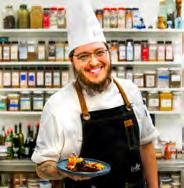

1000 In-Person Attendees

3 Keynote Speakers

50 + Presenters

5 Certified Master Chef/ Pastry Chef Presenters
20 + Morning M.I.S.E. (Mindful Inspired Safe Exercisers) Sessions with "The Running Nutritionist" Lisa Dorfman

60 + Trade Show Vendors


SEE YOU IN NOLA!
Next year’s ACF National Convention will be held at the Ernest N. Morial Convention Center in New Orleans, July 17-19, 2023



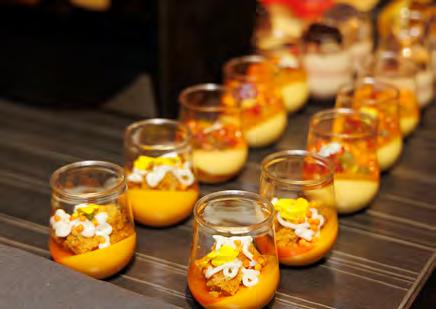

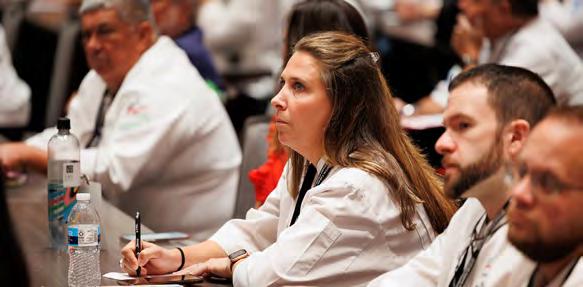






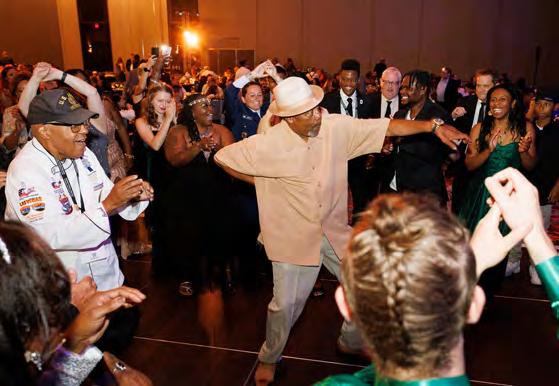

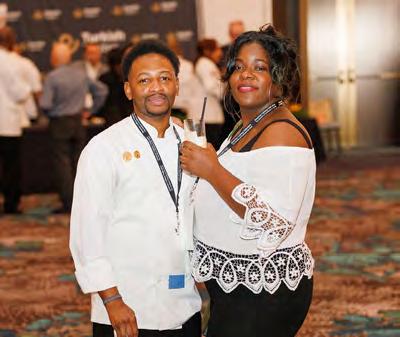




Congratulations to the following winners who competed for national titles at ACF's 2022 National Convention in Las Vegas.
CHEF DANIELLE HUGHES
Culinary Specialist First Class Petty Officer (CS1), U.S. Coast Guard
PASTRY CHEF OF THE YEAR
CHEF TROY MATTHEW SHAW
Culinary Specialist Chief Petty Officer (CSC), U.S. Coast Guard
CHEF JACK BIRREN, CEC
CHEF MICHAEL R. THRASH, CEC, CCA, CCE, AAC



LINDSAY PECKL STUDENT PASTRY CHEF OF THE YEAR

SARRENITY DICKSON


CHEF RYAN MANNING
CULINARY INSTITUTE OF NEW YORK AT MONROE COLLEGE (Best Of: Appetizer, Best Of: Salad, Best Of: Entree, Northeast Region Winner)
Runners Up:
Fort Bragg Military (Diploma and Military Region Winner)
Grayson College (Bronze)
Pulaski Technical College Culinary Arts & Hospitality (Bronze)
Metropolitan Community College/Institute for the Culinary Arts (Bronze, Central Region Winner)
Asheville Buncombe Technical Community College (Bronze)
International Culinary Institute of Myrtle Beach (Best Of: Dessert, Southeast Region Winner)

CHEF JOSEPH ALFANO, CEC, AAC Southeast Regional Winner
Northeast Regional Winner:
Chef Richard A. Panzera, CEC, CCE, AAC
Western Regional Winner: Chef Brian W. Dragos, CEC, CCE, AAC

CHEF WILLIE L. LEWIS, AAC, HOF (POSTHUMOUS)
CHEF JEFF HENDERSON
ACF PITTSBURGH CHAPTER
Northeast Chapter of the Year
Regional Chapter of the Year Central :
ACF Chefs of Northwest Indiana
Regional Chapter of the Year Southeast:
ACF Central Florida Chapter
Regional Chapter of the Year Western:
ACF Pikes Peak Chapter
ECOLAB
JUDGES:
Chef Darrin L. Aoyama, CEPC, AAC
Chef Michael J. Beriau, CEC, AAC
Chef John R. Coletta
Chef Frank C. Costantino, CEC, CCE, CCA, AAC
Chef Alex R. Darvishi, CEC, AAC
Chef Sarah M. Deckert, CEC
Chef Douglas A. Fisher, CEC, CCE, AAC
Chef Susan E. Notter CEPC
Chef Thomas F. Recinella, CEC, AAC
Chef Daniel J. Scannell, CMC
Chef RC Schroeder, CEC, AAC
Chef Victor Sommo, CEC
Chef Derek Spendlove, CEPC, CCE, AAC
Chef Michael J. Stamets, CEC
Chef J. Kevin Storm, CEC, AAC
CHAIRS:
Culinary Competition Chair:
Chef Randy J. Torres CEC, AAC
Culinary Competition Chair, Pastry:
Chef Darrin L. Aoyama, CEPC, AAC
Culinary Student Competition Chair:
Chef Frank C. Costantino, CEC, CCE, CCA, AAC
Chef Eloise Fernandez, CEC, CCE, AAC
Chef Darrin Aoyama, CEPC, AAC
Chef Ronna Keck, HAAC
Chef Amanda Miller, CSC, CPC
Polly Barrington, exexutive director, Atlanta Chapter
Chef Nicholas Barrington, CEC
Chef Robert Waskoviak, CEC
Chef Susanne Ebacher-Grier
Chef John Selick, CEC, CCA, AAC
Chef Keith Coughenour, CEC, AAC
Chef Richard Hoffman, CEC, CCA, AAC
Chef Jeffrey Schlissel
Chef Lisa Tomecek, CEPC
Chef Chris Bugher, CEC
Chef Lawrence Alexander, CCC
Chef Lance Cook, CEC, CCA
Chef John Casto, CEC
Chef Kirk Kief, CEC, CCA, CPC
Chef Joseph Kraft, CEC, CCA, AAC
Chef Jacqui Pressinger, CPC
Chef Brandon LaVielle, CEC
Chef Leslie Eckert, CEPC, CCE, AAC
Chef Cassondra Armstrong
Chef Jennifer Denlinger, CCC
Chef Steve DeShazo, CEC
Chef Fionna Espana, CWPC
Chef Sheila Osborne-Beck, CC
Chef Eveline Rosado-Haliday
Chef Victor Sommo, CEC
Chef Samuel Spencer
Chef Brian Tatsukawa, CEC
Chef Kathleen Vossenberg, CEC, CCE
Chef Elizabeth Faulkner
Chef Amaury Guichon
Chef Jeff Henderson
Chef Mariya Russell
Presented by AAC Chair Americo DiFronzo, CEC, CCA, AAC, and AAC
Vice-Chair Joe G. Aiello, CEC, AAC, HOF, during the 50th Annual AAC Fellows and Induction Dinner, Tuesday, July 26, Caesars Forum.
AAC CHAIR’S MEDAL
Chef Paul J. O'Toole, CEC, AAC
LAWRENCE A. CONTI, CEC, AAC, HOF, CHAIR’S ACHIEVEMENT AWARD
Chef Larry Chumley, CEC, AAC
JOSEPH AMENDOLA AWARD
Chef Leslie Eckert, CEPC, CCE, AAC
LT. GENERAL JOHN D. MCLAUGHLIN AWARD
Chef Travis Smith, CEC, AAC
CHEF GOOD TASTE AWARD
Chef Daniel J. Varano, CEC, CCE, AAC
SHARING CULINARY TRADITIONS AWARD
Chef Michael J. Rigberg, CEC, CCE, CCA, AAC
2022 AMERICAN ACADEMY OF CHEFS® INDUCTEES
Chef Richard Brumm, CEC, CCA
ACF Caxambas Chapter of Southwest Florida
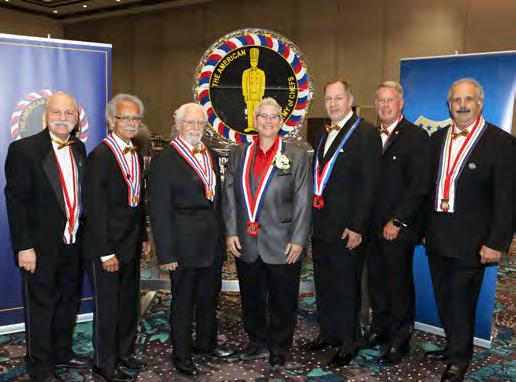
Chef Adolfo Cabrera, CEC, CCA
ACF Chefs Association of Southern Arizona Tucson
Chef Kevin Charles Doherty, CEC, CCA
ACF Epicurean Club of Boston
Chef Jason A. Jones, CEC
ACF Idaho Chefs de Cuisine
Chef Jerald "LJ" Klinkenberg, CEC, CCA
ACF Chefs de Cuisine of the Inland Northwest
Chef Jason E. Knapp, CEC, CCA
ACF Columbus Chapter
Chef Greg Matchett, CEC
ACF Pikes Peak Chapter
Chef Widjiono Purnomo, CEC
ACF Capital District - Central New York
Chef Lenard R. Rubin, CEC, CCA
ACF Chef's Association of Arizona
Chef Matthew D. Schellig, CEC, CEPC, CCE, CCA
ACF Michigan Chefs de Cuisine Association
Chef Christopher Sowa, CEC
ACF West Michigan Lakeshore Chapter
Chef Lisa D. Tomecek, CEPC
ACF Greater Baltimore Chapter
2022 HONORARY AMERICAN ACADEMY OF CHEFS® INDUCTEES

Chef Greg Beachey, CCC
ACF South Bend Chefs and Cooks Association
Chef John R. Coletta
National Member
Chef Joanne Madura
ACF Chicago Chefs
Chef Ryan Marquis
Canadian Culinary Federation, National President


Chef Andre Rush
ACF National Member
Chef William Schutz
ACF Chicago Chefs
2022 AMERICAN ACADEMY OF CHEFS CULINARY HALL OF FAME™ INDUCTEES
Chef Alex R. Darvishi CEC, AAC
Chef David A. Goodwin CEC, CCA, AAC
Chef Garry W. Waldie CEC, CEPC, CCE
Honorary:
Chef John W. Zehnder CEC, AAC
Creating a diverse, equal and inclusive culture in the workplace is something that many companies promise but few are able to fully deliver, particularly when it comes to the inclusion of members of the LGBTQ community. In the kitchen — as in many other environments and workplaces — there’s much room for improvement, and it can only truly be accomplished with education.

That’s the message from Vanessa Sheridan, a transgender consultant, speaker and author of “The Complete Guide to Transgender in the Workplace.” Sheridan has spent the past three decades consulting with organizations across the country and notes that workplaces in general tend to fester with microaggressions toward people who are different. Cumulatively, these can have a devastating effect over time.
“Sometimes people are simply unaware of the need to be professional to those who are different,” Sheridan says, “while other times they’re ignorant of the harm they’re causing, and for some, it’s that they’re simply mean-spirited.”
The Merriam-Webster dictionary defines microaggression as “a comment or action that subtly and often unconsciously or unintentionally expresses a prejudiced attitude toward a member of a marginalized group (such as a racial minority).”
According to Sheridan, microaggressions can take a variety of forms, from calling someone the wrong name to using the wrong pronouns, using slurs or even withholding information that person needs to get the job done. “When this kind of
• R epeated incidents of someone being called by the wrong name or pronouns
• Negative subtleties in interpersonal interactions over an extended period of time
• I nsensitive use of language, such as “sexual choice”
• Use of slurs or the pronoun “it” to refer to transgender people
behavior is done purposefully and continuously over time, it takes an emotional and psychological toll and creates a hostile environment,” she says. “That’s why training is so important, to teach organizations and their people to be respectful and professional. If everyone would just focus on that, it would eliminate a lot of problems.”
Calling a transgender individual “it” is simply dehumanizing, Sheridan says. “People don’t have a sexual choice, they have an orientation. And they don’t choose their gender identity, they simply recognize what it is and act on it.” The phrase “transgender lifestyle” is also erroneous. “There’s no discernable lifestyle that exists, just millions of transgender people living their lives.”

A diverse workplace is a flourishing environment where a wide variety of perspectives and worldviews come to the table, she adds. “The view from the margins is always more interesting than the view from the center. In a diverse, inclusive environment, the pool of breakthrough ideas widens, and it becomes easier to create fresh new products and services. That’s one of the reasons I encourage every organization to think about diversifying as much as possible.”
Sadly, the reality is that many transgender people deal with negativity and disparagement on a regular basis at work — and that’s if they can find work. “The unemployment rate for the transgender community is at least twice the national average, and it’s even more if you’re a trans person of color,” Sheridan says. “Unemployment and underemployment are major problems, and I think the foodservice industry needs to be aware of that.”
“Transgender people are certainly capable and able to provide excellent contributions if given the opportunity,” she reflects. “The problem is getting the opportunity, which starts with the hiring process. We need to educate hiring managers about the importance of looking into the trans community as a potential source for employment and to create conduits between the business community and the trans community.”
Awareness that a problem exists is the first step to addressing that problem and creating a solution, which often involves staff training. “We need top management in an organization to simply say, ‘We don’t tolerate discrimination, harassment or bullying in our workplace, and if you’re found doing that, we’ll take steps to manage it, up to terminating the employment,’” Sheridan says.
"IN A DIVERSE, INCLUSIVE ENVIRONMENT, THE POOL OF BREAKTHROUGH IDEAS WIDENS, AND IT BECOMES EASIER TO CREATE FRESH NEW PRODUCTS AND SERVICES." -VANESSA SHERIDAN
Two Miami-based Colombian chefs combine their heritage cuisine with Asian elements
 //
By Kenya McCullum
//
By Kenya McCullum
For Colombian-born Chef Cesar Zapata, incorporating a Latin flair into the Vietnamese cuisine he serves at his restaurant, Phuc Yea, makes sense. When he opened the Miami restaurant six years ago, it wasn’t getting the traction he wanted because locals just weren’t familiar enough with Vietnamese food to give it a try.
“I think the fact that we live in Miami — and we have such a huge Latin population here — and Vietnamese was pretty new to the city, we were having difficulties trying to get people into the restaurant just because they were not very familiar with the food,” Chef Zapata says. “And then I started thinking: Colombian ingredients, or just a lot of Latin American ingredients, that we use are also utilized in Southeast Asia, especially in Vietnam. So it just kind of makes sense to blend those ingredients together and fuse both cuisines. And little by little, I just started adding those dishes, and people loved them and were like, ‘Oh my God, this is delicious. This is completely new and different.’ Not only that, but the Asian community started to embrace the fusion, so eventually we just kept going with it and then I guess something new was born.”
What was born was a combination of Vietnamese and Latin food that leverages the similarities of both cuisines, making a delicious marriage that is perfectly consummated on the palate. Chef Zapata points out that both cuisines share certain ingredients — yucca, plantains, different types of tubers, corn, cilantro and chiles, as well as tropical fruits like
mango, avocado and papaya.
One dish that Chef Zapata says lends itself to the Vietnamese-Latin fusion is a pepper steak that uses many of the same ingredients and even the same cooking tools.
“In Vietnam, there’s a pepper steak that’s very similar to a lomo saltado,” Chef Zapata says. “This is a Peruvian beef dish, which is also done in a wok because Peru also has a lot of Chinese influence, so it’s almost the same ingredients. It has onion, tomatoes, soy sauce and [other ingredients] here and there that change but are still very similar.”
Of course, there are characteristics of Vietnamese and Colombian cuisines that are not so similar. For example, Chef Zapata notes that Vietnamese cuisine uses a lot of fermented products, like fish sauce and different types of paste, as well as a variety of curries, which are not utilized in the country he calls home but that he enjoys incorporating into his dishes.

Additionally, cooking techniques in Vietnam tend to be more Frenchinfluenced, while Colombian cuisine heavily favors Spanish techniques. For example, an avocado used in Colombian cuisine is mostly found in salads and other savory foods, while that same avocado in Vietnam is used as a fruit, so
it’s often found in desserts and shakes. One example of how Chef Zapata works through the differences to make the perfect fusion is his take on ceviche.
“If I’m going to do something, it’s something that’s going to enhance the dish,” he says. “So for example, I’ll create a Vietnamese-style ceviche. We call it ceviche because if we were to call it what they call it in Vietnam, people won't order it because they wouldn’t understand the name. Then let's say it’s that same ceviche, and we will serve it with tostones — which is very traditional in the coastal regions of Colombia
“THE CHALLENGE IS MAKING SURE THAT PEOPLE ARE GOING TO EMBRACE IT AND LIKE [BLENDED DISHES]. I TRY TO DO A LITTLE RESEARCH, TOO, AND MAKE SURE I'M NOT DOING SOMETHING CRAZY THAT PEOPLE ARE GOING TO HATE.” -CHEF CESAR ZAPATAPY noodles at Chef Cesar Zapata’s Phuc Yea in Miami draw in Asian flavors with lemongrass garlic butter and oyster sauce, paired with Parmesan and chives.
— versus how in Vietnam, they'll serve it with rice crackers or maybe some taro chips.”
The Peruvian-style leche de tigre, or marinade for the ceviche, consists of garlic, shallots, lemongrass, Vietnamese basil, calamansi, lime juice, fresh cilantro, sate (lemongrass chile oil that’s made in-house), nuoc cham (fish sauce), Thai bird chiles, kaffir lime leaves and sesame oil. “We mash the garlic, shallots, lemongrass and Thai bird chiles until it becomes a paste, and then we add the fresh cilantro and Vietnamese basil, continuing to mash before adding the fish sauce and all other citrus.” The fresh shrimp, scallops and octopus get marinated in the leche de tigre, and the ceviche is served with a garnish of diced jicama and cucumber.
For Chef Zapata, cooking through these differences boils down to treating both types of cuisines with the respect they deserve.
“I try to respect both cuisines as much as I can, and I also try to do things I enjoy myself,” he says. “The challenge is making sure that people are going to embrace it and like it. I try to do a little research, too, and make sure I'm not doing something crazy that people are going to hate.”
The owner of Miami’s Zitz Sum, Colombian-born Chef Pablo Zitzmann, takes a similar approach when

mixing Asian influences with the flavors he misses from home.

“I love everything about Asian food — strong flavors, different ingredients, lots of textures — and I think that, with the sweetness and the acidity from Colombian food, makes it blend perfectly,” he says. “A great example of this is coconut rice in its various forms — from arroz con titote in Colombia to Filipino coconut rice to Thai curries with coconut.”
For a roasted fish curry combining Latin and Colombian flavors, Chef Zitzmann makes coconut rice with titote, a Colombian caramelized coconut concentrate.
To make the dish, Chef Zitzmann says, “basically, you take the fresh coconut and peel it to get the meat of the coconut; then you grate it to get the first milk of the coconut. Cook that milk down in a copper pot and let it reduce until the solids and the liquids separate. The solids of the coconut, which are the fat and the sugar, eventually drop down to the bottom of the pot. Then you start caramelizing, and once it's caramelized, you filter it, and what's left on the filter is what
you use to cook the rice with. Then you can use the leftover liquid to make different preparations, like soup.”
Although the combination of Asian and Colombian flavors may be new to some customers, Chef Zitzmann finds people are very receptive to giving his re-imagining of Asian food a chance, and they ultimately enjoy his dishes.

“Nowadays people are open to try different things,” Chef Zitzmann says. “For the most part, I think the people that have tasted those combinations are very surprised, and they're very happy that they were introduced to certain ingredients they didn't know before.”
As the premier certifying body for cooks and chefs in America, The American Culinary Federation remains committed to providing you with the tools to achieve your professional goals. We are pleased to announce the launch of a new way to communicate the ACF credentials you have earned in the ever-expanding online marketplace — at no cost to you!

The menu at Pubbelly Sushi, the JapaneseLatin fusion gastropub founded by Chef José Mendín with multiple locations near Miami, features a variety of sushi rolls with both Asian and Latin ingredients, including the Cachapa Roll (pictured). Named after a traditional Venezuelan dish, the roll is made with queso de mano, queso llanero, tofu truffle cream, steak, garlic cilantro aioli, red onion, crispy potato and micro cilantro.
 Pubbelly Sushi Cachapa Roll (credit: The Lewis Collection).
Pubbelly Sushi Cachapa Roll (credit: The Lewis Collection).
Just in time for the beginning of National Hispanic Heritage Month, five-time James Beard Award semifinalist Chef José Mendín, co-owner of La Placita in Miami, tells us more about this iconic dish and how he got National Mofongo Day on September 24 added to the National Day Archives.


Q: What is mofongo?
A: Mofongo is a traditional Puerto Rican dish made from fried plantains smashed with pork and garlic. It is the most iconic dish in the island of Puerto Rico. It’s a unique dish and is very much ingrained in our culture.
Q: What is the history of the dish?
A: Mofongo evolved from the African dish fufu. Like fufu, mofongo is made using a similar method — mashing a starchy vegetable, then adding liquid and some type of animal fat to soften the mixture. In the Caribbean, it was made with the vegetation that was available in the region. Plantains are most often used,
but other starchy root vegetables native to the island utilized by the indigenous Taínos can also be used.
Q: How is it commonly made?
A: Mofongo is made by using a wooden mortar to smash fried green plantains with pork and garlic. It's mostly served as an entree for dinner or lunch but it can also be a side.
Q: How do you make the dish at your restaurant?
A: At La Placita, we make it with green plantain, yuca or sweet plantain. For the fat and seasoning, we use pork belly confit, garlic, butter and olive oil. We then shape it into a ball to be served.
Q: How did you get the National Day Archives to add mofongo to its official calendar?
A: I simply submitted the application and answered their questionnaire as part of the application process. That’s it!


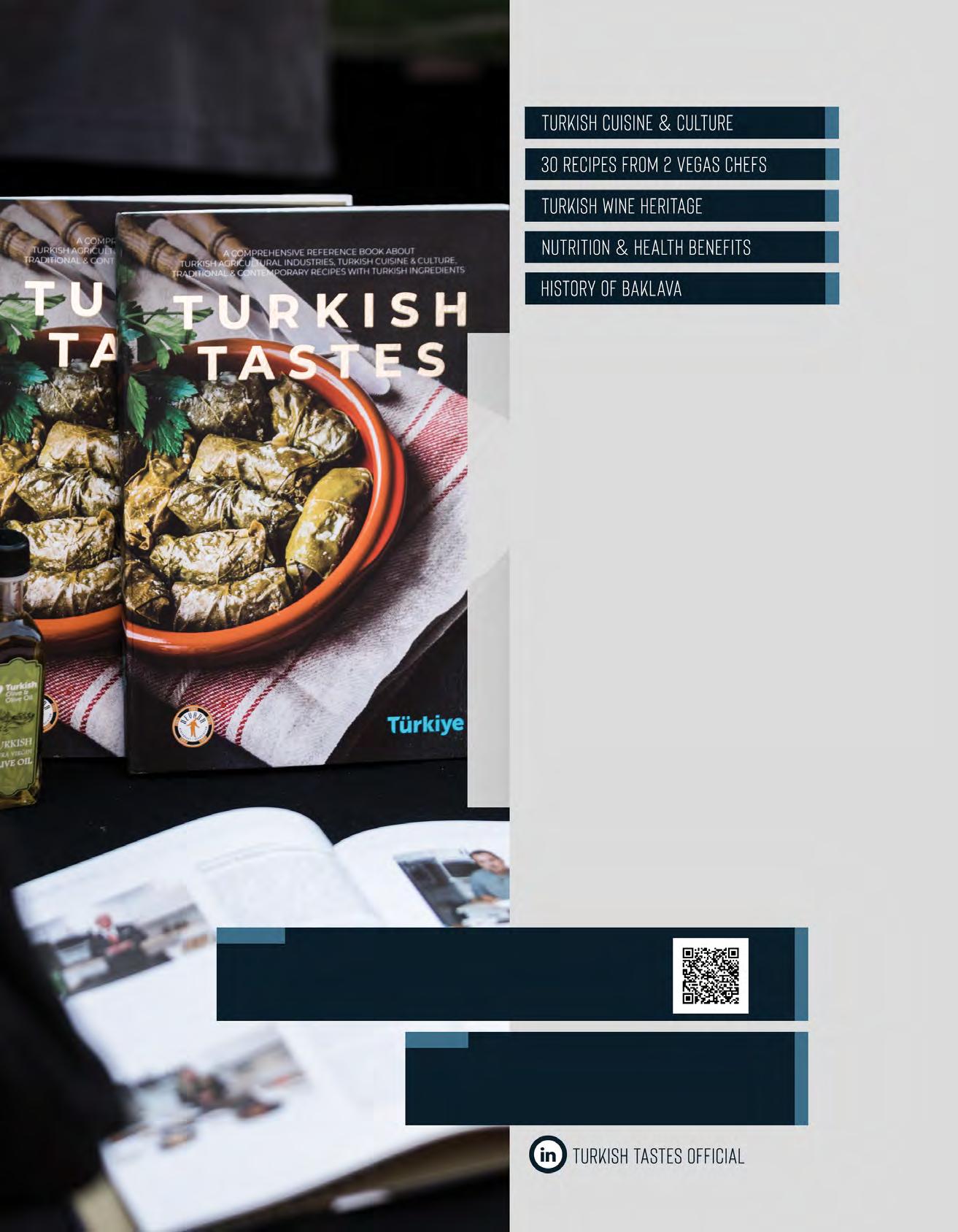
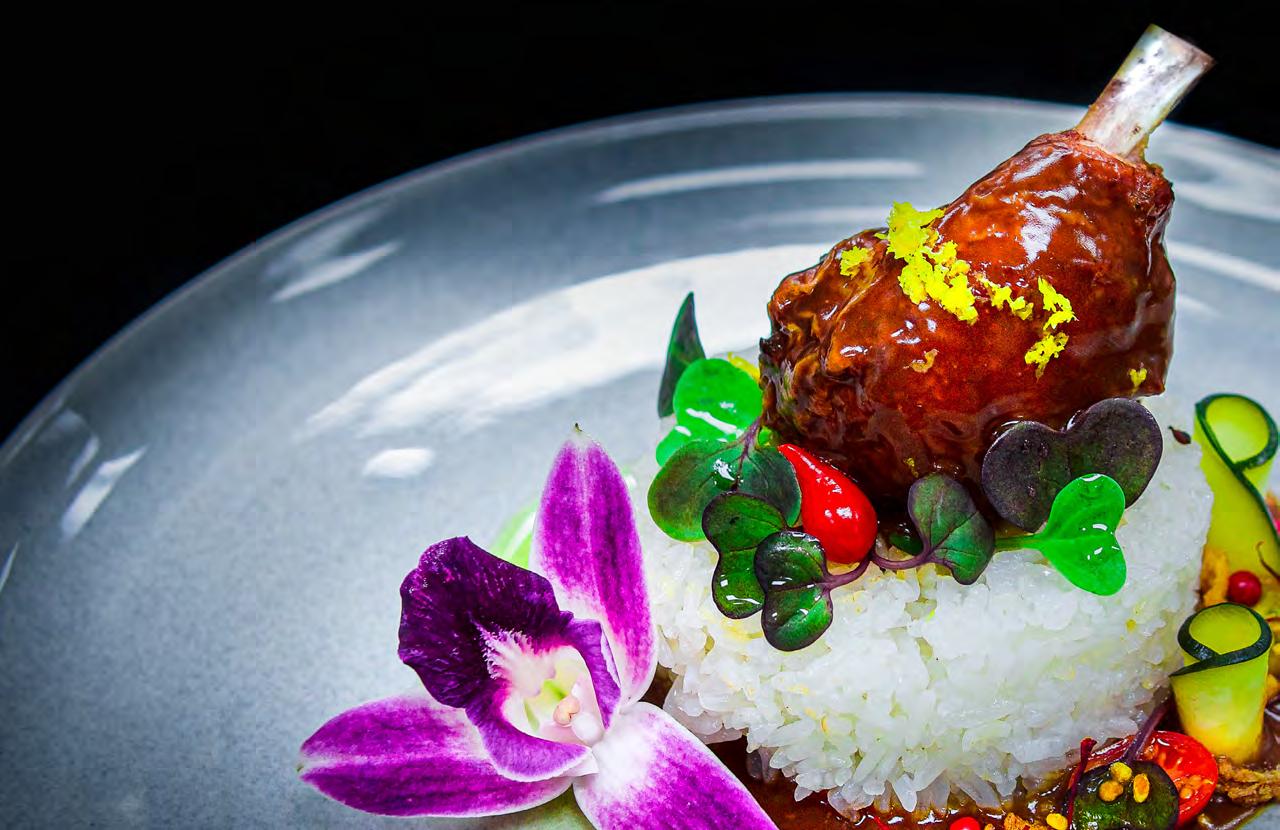
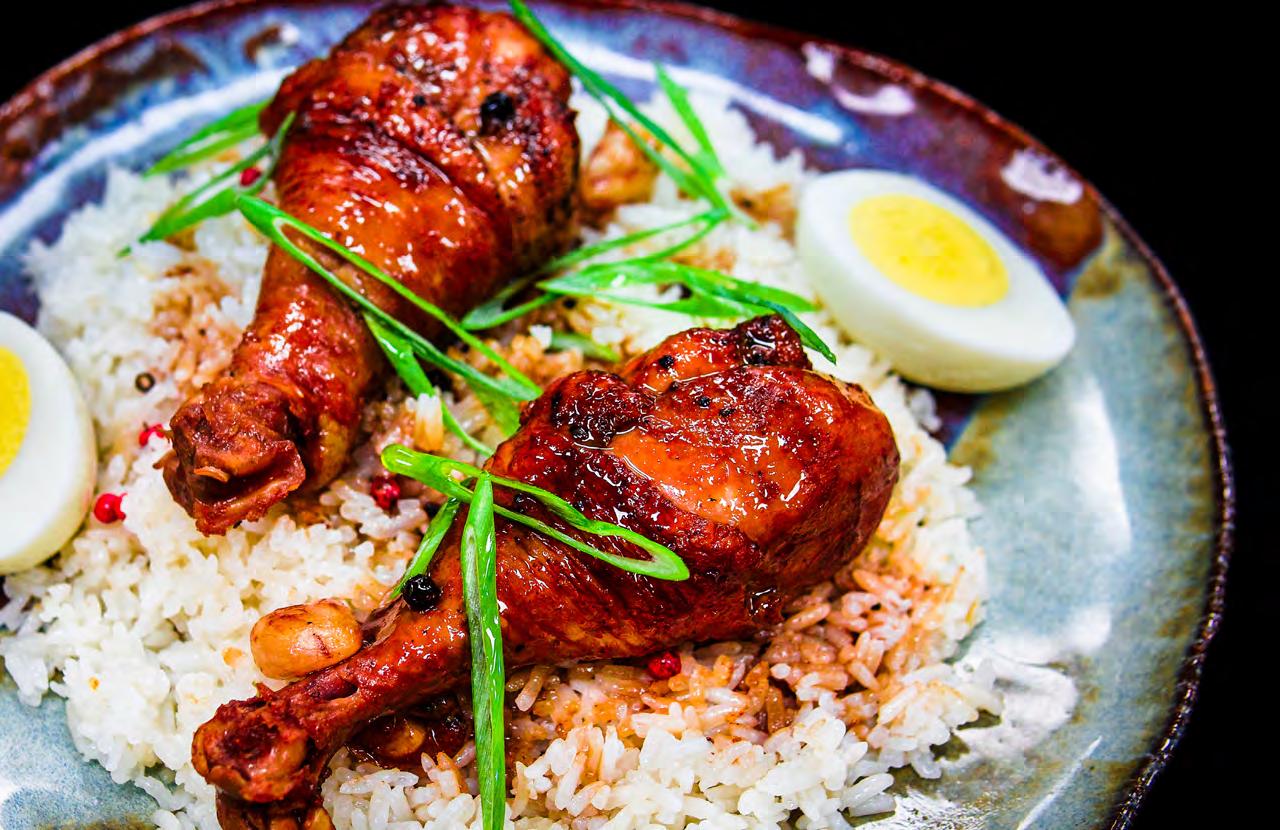 Photo credits: Eli Schopp
Photo credits: Eli Schopp
ACF Chef Hannah Brinner, chef de cuisine at Center Stage Catering in Rocky Mount, Virginia, harkened back to childhood memories for this classic chicken adobo. “My mom is Filipino, so many mornings I would wake up to the smell of chicken adobo cooking,” Chef Brinner says. “It was always a favorite for every occasion, from birthdays to weddings, and one of my favorite dishes.” The national dish of the Philippines can take on many variations depending on region, but Chef Brinner’s family version features just five main ingredients (other than the chicken): a good-quality soy sauce, vinegar, peppercorns, bay leaf and garlic. Chef Brinner sears off a whole chicken cut up and then braises it low and slow in the sauce mixture for about an hour, or until the “garlic is mush.” The vinegar adds a nice tang while also tenderizing the meat, and because the sauce is so rich thanks to the rendered chicken fat, Chef Brinner’s mom always served the dish straight up with some steamed white rice.
For a modern take on chicken adobo, Chef Brinner sticks with the same base ingredients but roasts the chicken and makes the sauce separately for a more deconstructed version. “I reduced the [sauce] for a little extra time so it thickens up.”
To plate, she spoons the reduction on the plate and tops it with a shaped mound of rice and the roasted chicken pieces dunked for a second in the sauce. Pickled zucchini, micro radishes, saffron threads, lemon zest and red peppercorns add pops of color and freshness for a sophisticated presentation.
For recipes, visit wearechefs.com


When you spend all day — and sometimes all night — in a kitchen, it becomes an important place. It’s the “heart of the house” and the full-time office for most chefs.
But what makes a good kitchen into a great kitchen, or even a dream kitchen? Great flow, effective equipment, plus some toys and ergonomics go a long way in meeting chefs’ dreams.
Chef Matthew Thompson, CEC, CCA, would love a kitchen with enough space — particularly one with enough room for staff to eat at a common island. “It’s a really important part of the dining and culinary component — being able to celebrate food,” says Chef Thompson, chief culinary officer for Harvest Table Culinary Group, a foodservice contractor based in Philadelphia and primarily serving the B&I and college/university segments. “We spend so much time eating behind a steering wheel or out of a paper bag.”
There would also be a spot where students could watch cooking demos. This would ideally contain a cooktop and some prep space on one side, with some stools on the other side, giving students the ability to easily jump in and be interactive, he says.
Factoring the comfort of chefs and cooks into kitchen design is becoming more and more important, says Sean Callnin, FCSI , executive principal at Ricca Design Studios, a Colorado-based foodservice design consultancy with offices around the country.

Heat and grease are two factors that make kitchens unpleasant to work in, and the way to monitor those is with equipment that produces less heat and has a great ventilation system.

Lately, “there’s been a huge push for the electrification of kitchens, and that’s growing and it’s not going to go away,” Callnin says, noting that it’s going to take a lot to convince some chefs to step away from gas — even partially. This, as some states and municipalities around the country (California and New York to name a couple) enact or consider gas bans for new buildings as a way to reduce carbon output.
In terms of ventilation, “Half the restaurants I go into, I can immediately feel the grease in the air, even in the front of house, so you can only imagine how bad it is in the kitchen,” Callnin points out. “You want
to make sure your kitchen has a 10% negative pressure so when the kitchen door opens to the dining room the air does not go into the restaurant.”
This all comes down to the exhaust hood, he says, which must be the right size for the location. Don’t keep CFMs (cubic feet per minute) and exhaust levels too low to save costs, he says, “because you run the risk of the hood not capturing properly.” And, if you change out the equipment under a hood, check to see that both still work in tandem. An exhaust hood that can’t keep up with what’s beneath it will spew grease and smoke into the air.
“Once you start to feel it, it starts to spill out into the front of house as well,” Callnin says.
There’s more to a well-equipped kitchen than just looks. Kitchens should also be designed for ergonomics to prevent unnecessary moves and twists and to protect people who perform the same tasks day after day.


Callnin is a fan of installing some counters that can be adjusted for tall chefs. The standard counter height is 32 inches, but some chefs prefer counters at 38 or 39 inches. However, these can be rendered useless when that chef moves on to another position. Having adjustable counters means anyone can use them, including someone in a wheelchair.
Callnin is also a fan of rubberized flooring because it has some give and protects joints. These floors are typically made of non-porous materials that hold up well against sanitation chemicals and are easily cleaned. Some even have some traction to prevent skids.
For the most part, Callnin avoids mats because they’re not easy to clean, and they can be heavy to pick up when needing a wash. They can also pose a tripping hazard and make it difficult to smoothly wheel carts through a kitchen.
Multitasking equipment like combi ovens and turbo ovens bring a lot of advantages to a kitchen. First, one piece of equipment takes up less space than several — a huge bonus for a small kitchen. They can also be pre-programmed with recipes and other settings, making them easier to operate; plus, they give chefs the option of many cooking processes like steaming, roasting and even hot-holding in one. On the downside, they’re expensive, although prices have come down in recent years.
When ACF Chef Dan McGee started working at Swissôtel in Chicago, he was hesitant to use combi ovens, “but now I don’t think I could work without them,” says the executive chef and director of food and beverage for the hotel. “It’s the technology, ease of use, programming, changing humidity, heat and temperatures that are so great, and you can just hit a button.” He loves that these are especially helpful now with the shortage of trained staff and says another advantage is that they’re connected to the cloud so it’s easy to upload new recipes or receive alerts for equipment malfunctions or maintenance issues.
The combi oven Chef McGee uses at Swissôtel also helps with banquet operations because food has to travel from the kitchen up to the 42nd floor for major events.
“We cook food about 75% of the way through, then we roll it into a blast freezer and chill it down really quickly,” Chef McGee says. “When everything is cold, we plate the food, so there’s no pressure. When the captain calls the chef for the hot food, we know it takes eight minutes in the combi oven, then we put covers on and roll it up to the 42nd floor, where we add sauce and garnish. In the old days, you’d do it ahead and it would sit in the hot box and dry out. Now we have 100 times better food quality.” Cooking food this way, he says, also takes around four people, versus the 15 he’d need otherwise.
Chef McGee is also a big fan of the newer blast chillers on the market that are smaller in size compared to previous models. Not only do blast chillers automate food-safe cooling processes, but they can also proof, bake and blast-freeze to enhance shelf life, he says. Blast chillers are also programmable like combi ovens, so a pastry chef could refrigerate and proof breakfast pastries overnight and bake them off in the morning with little to no intervention.
Executive Chef Michael Matarazzo, CEC, at Farmington Country Club in Charlottesville, Virginia, has been enjoying the new blast chiller in his kitchen, which underwent a renovation last year.
“It does everything but your taxes; from a cooling perspective, it extends the shelf life and ensures a safer product.” He also uses it for ice cream and sorbets and to flash-freeze items he needs to store. “Because of the rapid freezing, the process significantly decreases the amount of ice crystals that form in and on food, ensuring low moisture loss upon thawing.”

The blast chiller also records all data, and that information can be transferred to a flash drive “so we can track everything and know we’re in compliance with HACCP and food safety guidelines.”
Another favorite piece of equipment for Chef Matarazzo is his indoor smoker, which he uses to make charcuterie inhouse and to smoke brisket, pork shoulders, chicken and ribs. He also uses it to prepare shrimp, scallops, salmon and oysters “for hors d’ oeuvres and smoked seafood displays for events.”
In addition, Chef Matarazzo favors his new cooling well that was custom fitted for the kitchen. “We use the cooling well for large containers and pots of stocks, soups and sauces; the blast chiller is only effective for shallow pans of food,” he says. “The only effective way to rapidly cool such large amounts is with a proper cooling well.”


Sous vide is a method of cooking favored by Chef Peter Stine, campus executive chef and district culinary champion with Sodexo at the University of Mary Washington in Fredericksburg, Virginia. “It opens up a whole new element in the kitchen,” he says. “You can do more. If you’re marinating things, it takes a fraction of time to get the same flavor from it. It allows you to gently cook things like fish at a low temperature, and it helps retain moisture. It’s a longer process in a lot of cases, but it retains a lot of flavor.”

Chef McGee enjoys his electric plancha, another specialty piece of equipment. These, he says, “have hot points so it might have six zones, and you can control heat on each zone. You can hold something like hollandaise at one heat, then over here cook an egg, and over here do bacon. And at night if you’re sautéing or doing sous vide, you have several points to cook on.”
Before the renovation at Farmington, Chef Matarazzo says, the kitchen was segmented with lots of corners, and it wasn’t very open. “It wasn’t conducive for safe traffic flow and wasn’t directly connected to event spaces so it was a journey to get from the plating table to the diners,” he says. “Now there’s a direct route, so food is warmer when it gets to the guest. That affects menu writing, too. There are things I wouldn’t have put on a menu before, just based on the travel distance.”
A kitchen with unbroken lines of sight also helps tremendously with communication, Chef Matarazzo says. “It’s easier to get a hold of people because you’re not trying to call out to someone who’s around three corners and in a different room.”

A kitchen has many moving parts — and people. Thanks to some better design practices and equipment possibilities, however, chefs these days have more tools than ever at their disposal when it comes to tackling labor shortages and uncomfortable working conditions. It’s all about dreaming big.
Chef Craig Tarrant , director of culinary operations for Compass Group at the Microsoft headquarters in Seattle, loves his brand new, 100% electric kitchen at One Esterra on the new East Campus. Seattle is one of several municipalities implementing, on track to implement or considering gas bans for new building developments. Some of these bans apply to building heating methods only; others are impacting kitchen design.
One of his favorite finds for One Esterra is an electric wok. “Tasters, surprisingly, couldn’t distinguish any difference between food cooked on this and on a traditional wok,” he says. Chef Tarrant also recently found an electric tandoor oven he’s excited to start testing.
Beyond being good for the environment, an electric kitchen offers many advantages, Chef Tarrant says. “Overall, the air is much cooler since there’s less heat coming from equipment.” Not to mention, the equipment itself is very sensitive and quickly changes temperature when needed, plus no hoods are required. Cooking with electric equipment also has the potential to reduce heat in the kitchen because the heat is centered around the food in the cooking element, or pan, rather than just throwing up flames around it. Food for thought, Chef Tarrant says.
 // By Liz Barrett Foster
// By Liz Barrett Foster
More than half of all foodborne illness outbreaks in the United States are associated with restaurants, according to the Centers for Disease Control and Prevention, and experts suggest that the challenges facing food safety will increase in the coming years due to factors such as expanding supply chains and antibiotic resistance.
A recent report from consulting firm Deloitte titled, “The Restaurant of the Future: A Vision Evolves,” states that increased cleanliness and safety protocols are important to consumers. Almost half (45%) of consumers surveyed said they would not return to a restaurant that experienced a safety incident, while more than half (55%) of consumers surveyed said they would be willing to pay between 10% and 50% more to know about the safety and cleanliness that surround the preparation and transport of their food.
With consumers clamoring for more transparency, how are kitchens addressing the latest changes both inside and outside of the kitchen?
The restaurant industry has always had a laser focus on food safety, but never did the spotlight shine so bright on this issue than during the last two years. When Chef Shawn Loving, CMC, took over as executive chef of Detroit Athletic Club last year, one of his first tasks was to build a to-go program for the club’s membership that would hold up beyond the pandemic. The task involved sourcing new, secure packaging and labels that would elicit increased trust from the consumer. “We chose a stronger to-go container that holds its temperature well, created labels that display ingredients and time of preparation, and utilize tamper-proof labels, which we initial after sealing,” Chef Loving says.

“The pandemic made operators, in general, think differently about presentation and to-go programs as they relate to safety,” Chef Loving says. Although COVID-19 does not cause foodborne illnesses, the pandemic did result in consumers becoming more conscious of food safety as a whole.

Chef Shawn Kohlhaas, principal of Culinary Cultivations and president of the ACF Greater Grand Rapids chapter, points to certifications as one of the foundations of a strong food safety training program. “The most important thing is getting your managers certified in food safety and sanitation, so they understand the basics of food safety,” he says. “Then you can do continuing education or in-service education to gain knowledge from your superiors.”
The National Restaurant Association Educational Foundation’s ServSafe program, which maintains the most up-to-date food safety standards regarding sanitation, separating raw and cooked ingredients and maintaining safe temperatures, now offers certifications and training programs for specific kitchen positions and segments of the industry. These include ServSafe Manager, ServSafe Food Handler, ServSafe Alcohol, ServSafe Allergens, ServSafe Academic (for culinary schools) and ServSafe Workplace. Of course, all ACF certifications require the completion of coursework and training in the most updated food safety and sanitation practices. ACF members can visit the Online Learning Center (olc.acfchefs.org) for additional food safety instructional videos and training materials.
The global online food delivery market is expected to reach $128 billion in 2022 with a compound annual growth rate of 5.6% over the next four years, according to a report conducted by Capgemini, a European-based technology consultancy. The importance of food safety will grow along with the market, which is why it’s more important than ever to keep food safety training updated in the kitchen.
If your food is placed into bags or containers that reduce the possibility of chemical, biological or physical contamination, you should avoid food safety delivery problems, according to Chef Kohlhaas, who says that contamination is of greater concern than temperature control during delivery. “You have a four-hour window before food is in the temperature danger zone,” he says. “The quality isn't going to be there, but as far as temperature control, that’s not the big issue with transportation.”
One food safety issue that poses a unique delivery concern is food allergies, specifically when partnering with third-party delivery companies and kitchens. Oftentimes, the menu on a third-party site is abbreviated and won’t show the possible allergens in a kitchen, according to Hal King, Ph.D., managing partner at Active Food Safety, a food safety consultancy. “A customer might have an allergy to something and not know that the food was prepared in a kitchen that handles multiple restaurant brands, posing a risk for cross-contamination,” he says. This poses an even larger threat when ghost kitchens don’t disclose their locations. If there are known allergens such as peanuts, soy, eggs or dairy in your menu items, disclose them on individual menu items online so that customers are alerted prior to ordering.

“If I owned a restaurant and was working with third parties to deliver food to my customers, I would survey my customers to see how their experience was,” King says. “Consider including storage and reheating instructions, using tamper-evident seals and including a hand wipe that illustrates that you care about customer safety.”
The restaurant industry is a long way off from returning to the employment levels it saw pre-pandemic, according to the National Restaurant Association. In fact, as of April, eating and drinking establishments were still 794,000 jobs shy of where they were prior to 2020.
However, Chef Loving says it’s important not to let the lack of labor or the pressure of multiple events or tasks win out over food safety. “Successfully pleasing customers or your membership should flow hand-in-hand with safety,”
he says. “We must stay the course for our members, customers and clients; they all need our knowledge and expertise during these times.”
Due to an increase in delivery orders and a decrease in labor, prepared food is often held for longer periods of time. But, according to Chef Kohlhaas, food safety standards allow up to a seven-day holding time for prepared foods with proper temperature control, which leaves a lot of room for error. Luckily, Chef Kohlhaas says, “Most operations won't hold on to any kind of prepared food for seven days, not because of food safety, but because of the quality issue.”

New technologies are helping to increase food safety in the kitchen as well. These include technology temperature equipment devices, which can monitor every item in a restaurant’s cooler, eliminating the need for manual temperature checks, and an increased use of data analysis to help streamline and simplify safety checks throughout an operation. Gone are the days of the clipboard and pencil.
It’s important to embrace technology and the ways it can help maintain consistency and safe practices in the kitchen, Chef Loving says. “If ovens can feature tons of technology, what are we afraid of? A chef's value [of safe food] will always be strong.”
Looking toward the future, King foresees technology that might help consumers track food from prep to plate. “We may need better ways to track the time of prep so customers can understand that it was prepped at four o'clock, they received it at five o’clock, etc.,” King says. “Those kinds of things could help customers know food isn’t going to be held out of temperature too long.”
Whether you’re utilizing the latest technology or still putting pen to paper, Chef Kohlhaas says the goal is always to make food safety your priority. “Don't wait for somebody to come to you about a food safety issue,” he says. “Be an advocate and ambassador of food safety in your operation.”
“The most important thing is getting your managers certified in food safety and sanitation, so they understand the basics of food safety,”
-Chef Shawn Kohlhaas, Principal of Culinary Cultivations President, ACF Greater Grand Rapids chapterSource: Culinary Cultivations Labeling Standards

These are difficult times to be in the catering business, but those chefs who work in catering find the work very rewarding.

Chef Meg Walker, CEO and executive chef of Made by Meg Catering in Redondo Beach, California, got into catering because the life she wanted to lead involved not only being creative in the kitchen but also being a mom at home. “I looked at the life I wanted to lead, and I wanted to be home at a reasonable hour, so I chose catering,” says Chef Walker, who currently feeds guests at about 600 annual events, almost half of which are weddings. The remainder are corporate events, personal milestone celebrations and Hollywood parties.
Before the pandemic started, Chef Andrew Brackner, owner of Talk of the Town Catering in Roswell, Georgia, was looking to move away from weddings because corporate clients “know what they want,” he says. “It’s cut and dry, and they have bigger budgets. Whereas with brides, if there’s an issue, you’re going to hear about it and it’s blown out of proportion.” Nowadays, Chef Brackner’s business breakdown is 60% weddings, 20% corporate (mostly drop-offs) and 20% social events like birthdays — though he’d like the number of weddings to decrease.

Caterers are shifting their focus on certain clients to maintain work-life balance amid challenges
// B y Amanda BaltazarVarious spreads by Chef Meg Walker, CEO and executive chef of Made by Meg Catering in Redondo Beach, California.
In what turned out to be horrible timing, Jo Ann Poulias Schmidt and her brother, Chef Evan Poulias, launched Old Ballard Catering Co. in Seattle in March 2020. Their events are evenly split between corporate and social events, and though the corporate events are fewer in number, they’re greater in income.
“People want to make sure the events they’re throwing are really great,” Poulias Schmidt says. “They used to have food and some drinks, but now there’s a photo booth, photographer and food stations. Corporate clients are trying to get people excited about coming back to the office.”
Old Ballard is also catering weddings, but more often than Poulias Schmidt would like. “There’s so much emotional investment in a wedding,” she says. “I’m going to be more careful next year when I’m having conversations with brides and couples, and I’ll look for cues about their expectations.”
Though catering business completely dropped off for many in March 2020, some were able to find other ways to stay afloat. Made by Meg made money delivering meals to senior citizens. “It wasn’t the most exciting cooking, though it was rewarding,” Chef Walker says.
Old Ballard sold food to the community through a window out of its facilities. And Talk of the Town stayed afloat by feeding 500 people quarantined on a nearby cruise line, as well as making lunches for local school children who were no longer being fed at school. Through these jobs, Chef Brackner just made his margins.
Since 2021, catered events have picked up, starting with smaller events for just 10 to 25 people. But the events are more lavish now, Chef Walker says.
Plated events are up, especially for weddings, and are lower risk when it comes to COVID-19. For corporate events, Chef Walker says, clients are asking for stations with grab-or-go items rather than exhibition-style food.


When it comes to food trends and catering, “comfort food such as a brisket taco station with fried green tomatoes, pork chops with pistachio crust, or smoked salmon with potatoes are popular,” Chef Brackner says. “Wholesome, nourishing foods that remind people of a better time is what people want these days.” He’s also getting very specific requests for Hispanic foods for events like quinceañeras or Indian food specific to a region. Poulias Schmidt of Old Ballard Catering says she’s seeing more interest in foods from island cuisines like Hawaiian and Filipino.
Chef Walker says individualized desserts — from macarons to dessert shooters — are rising in popularity.
Post-COVID-19, what’s most affecting the catering business is the rising costs for supplies and labor.
Prices of food are up 30 to 40%, Chef Walker says, and disposable glove prices have doubled. She has had to increase prices for clients, though at a lower rate (around 20%) than her costs are increasing. To handle the increases, Chef Walker started adding a 20% gratuity to her clients’ bills, which almost all of the clients are happy to pay, she says.
This increase in prices has only “somewhat” affected clients’ extravagance, Chef Walker says. “However, given the large guest counts we're seeing again, there have not been a lot of caviar and raw bar requests.”
For her own costs, she’s looking really closely at expenses and at which vendors she uses. “I’ve implemented a new ACH payment option to help with credit card fees and have evaluated everything from the internet to the laundromat that washes our linens.”
One difficulty with catering is that many events are booked way in advance, she points out, “and I can’t go back and renegotiate.”

Chef Brackner has a clause in his contract that states if prices go above a certain amount, he can substitute other food items or dishes. However, he says, “If you’re a bride, you’re not happy about this. A few are understanding, but the majority fight it and I cave because I don’t want to damage our reputation.”
He has had to raise some prices; for instance, the price on crab dishes has increased by 30%. He also switched to “market price” for items like ribeye, New York strip steak, filet mignon and lobster tail. He removed all pricing from his website, “so we can adjust to the last-minute market increases.”
To keep costs down, Chef Brackner has taken some of the more labor-intensive items off the menu and is buying things like filo dough ready-made, which he says he’s not happy about since he’s a from-scratch operation. He also raised the gross total minimum to accommodate fewer events “while staying as profitable as possible. Our corporate drop-off menu has been raised, and we are limiting our breakfast availability.”
Poulias Schmidt is seeing ingredient costs rise by around 45% and is increasing the prices of her catering, too. Individually packaged meals that were $15 are now $20. “We used to look at our pricing once a year, but now we do it as frequently as we can and at least on a monthly basis.”
Her clients mostly accept the price increases, she says, “because they see it at the grocery store.” But she notes that her prices often seem much worse to clients because the invoices are for so many people.
Like Chef Brackner, she has a contract clause to protect the company if the price of food jumps significantly. “If the guest doesn’t want to absorb that increase, we’d offer them other products, but the price is not guaranteed.”
Labor is an enormous challenge for Talk of the Town because so many people left the industry during the pandemic.
Chef Brackner is finding that people who want to work in
foodservice are seeking jobs through apps, and there are always jobs available through them. This means, he says, “there’s no responsibility, no accountability, and they pay $19 to $20 an hour. We can’t compete with these wages.”
Because of this, he’s turning down business “left and right.” In his best year, Talk of the Town made $5 million in sales; this year will be closer to $3.5 million, “with everyone busting their gut.”
Labor’s a problem for Old Ballard Catering, too, and Poulias Schmidt says applications for positions are “pretty slim pickings” at the moment.
Chef Brackner got into catering because it’s a more predictable industry than restaurants. “You know exactly what to order, and you can plan your prep over several days. We know who, what, when, where, and we get paid before we show up.”
He also loves being part of special milestone events, which bring him “a sense of being complete,” he says. “There’s a feeling of success when the efforts of our team are well-received and help to create a memorable event.”
Chef Walker says, “catering is called for when there is an occasion — a day that your client may remember for years to come. To be a part of those moments and to make them smooth and memorable is one of my greatest joys.”


The way Chef Derek Ivancic, CEC , sees it, one of his major roles as president of the ACF Cleveland chapter is to constantly seek out new ways to include more and more chefs — both experienced and up-and-coming — as members in the group’s events and programming.

“It’s easy to get an established chef who works for a big company or restaurant to join our chapter, but so much of our future growth — and the growth of our profession — depends on how we get the young line chef, the individual just starting out in the business, to join our chapter,” he says.
Toward that end, Chef Ivancic and his board try to have as many events free of charge as possible — and to make many of those programs educational in nature. So far this year, the chapter has only had to charge for one event thanks to reserves and donations.
“Like most other chapters, we took a bit of a hit during COVID, losing about 20% of our members, and most of those we lost were the younger students from Tri-C Community College,” Chef Ivancic says. “Membership is part of their tuition, and when their enrollment took a hit, it influenced our membership, too. However, as COVID has somewhat receded, we are gaining members monthly.”
The chapter also saw some membership attrition from more experienced chefs, “but we have reached out to them, and we are bringing them back as their businesses recover and are returning to near-normal,” Chef Ivancic says.
Formed in 1960, the chapter at press time had 190 members, with attendance hovering at around 40 per meeting.
Chef Ivancic says the chapter has some high school teachers as members and is involved with some accredited high school programs. “And we’re definitely involved when there’s a skill competition in the area,” he says.
Upgrading the chapter’s social media presence, particularly on Facebook, has also been a strategy to recruit new — and younger — members. “We’ve seen very positive results from social media,” Chef Ivancic says. “That really helps to push things out there and exposes us to a younger audience.”
The ACF Cleveland chapter also recently merged with the neighboring ACF chapters of Akron and Canton, which has helped bolster its financial strength, add more members and provide more far-reaching events.
“Akron has always done a great job with its Veterans Day dinner, and we’re absolutely keeping that alive,” Chef Ivancic says. “We are taking a look at all the great things [Akron and Canton] have done and working to find ways to keep those events going and improving.”
President
• Derek Ivancic, CEC Vice President
• C laudia Diaz, CC Vice President
• Pamela Mock, HAAC Immediate Past President/Chair
• John Selick, CEC, CCA, AAC Secretary
• Bradley Ball, CEC (Certification Chair) Treasurer
• X avier Smith, CEC Board Member
• Thomas Capretta, CEC Board Member
• R ené Rawraway, CEC, CCE, AAC (Bylaw and Procedure Committee Chair)
Sergeant at Arms
• Jonathan Phillip Barger
A key theme for many of the chapter’s events, Chef Ivancic says, is education. “We have 10 or 11 meetings each year, and a focus on many of them is education,” he says. We are fortunate to have strong relationships with our vendors, and they help us not only financially but sometimes in helping to identify topics of interest to our chefs.”
Chef Ivancic and his board focus on providing value for chapter membership.
For example, the chapter recently held a raffle auctioning off free hotel registration for the ACF convention in Las Vegas in July. Prior to that, the chapter held a certified evaluator course. “We’re booked through the end of the year with events,” says Chef Ivancic, who was recognized at convention with the Dr. L. J. Minor Chef Professionalism Northeast Region Award. Longtime Cleveland chapter member Chef John Selick, CEC, CCA, AAC, received a Presidential Medallion at convention.
In June, the chapter held a family cookout at which chefs and families were invited to mingle and network. In July, attendees were treated to a tour of Rainbow Farms, a family-owned farm in Ohio where more than 40 different varieties of fruits and vegetables are grown.
At press time, a pastry demonstration by ACF Pastry Chef Susan Notter, CEPC, the current pastry chef advisor for ACF Culinary Team USA, was scheduled for August. In September, the chapter will host the Certification Practical Exam, and in November, the chapter will host a tour of a local baking enterprise, Orlando Baking Company in Cleveland.
One of the chapter’s headline events is its President’s Lunch in October. “This is one we always sell out,” Chef Ivancic says. “We usually have between 150 to 175 people at this program.”
The chapter also focuses many of its efforts on charitable events. It has forged a close relationship with the local Ronald McDonald House; Chef Ivancic at press time was in the midst of developing a special event to aid that organization.


All with a focus on finding new ways to recruit members, offer value for membership and continue to nurture the culinary profession in the Cleveland/Akron/Canton area.

Drugs. Prison. Cinnamon rolls.
These are hardly the ingredients anyone would choose to conjure up a life resulting in irrefutable success — but those are the exact ingredients that catapulted the career of one of the country’s most inspirational chefs: ACF Chef Jeff Henderson.
“I was practically a millionaire at 19, but I got there by being a drug dealer on the streets of San Diego,” Chef Henderson says. “I never did drugs or got involved in any violence, but I was a dealer, and I made lots of money doing it. It was one of the first things I was ever good at other than selling newspapers.”
Chef Henderson’s childhood was, at best, difficult. “I was always hungry, so I started stealing to have money for extra food,” he says. “And then, as I got older, I started my drug business with a $150 investment.”
Eventually, though, in 1988, the federal government caught up with Chef Henderson, and he was sentenced to federal prison — which he now says was a blessing in disguise.
“At first, it was called ‘Club Fed,’ because we had a lot of amenities there,” he says. “We used to get T-bone steak once a week — some prisons even had swimming pools and tennis courts.”
But in 1991, CBS’s “60 Minutes” ran an expose on those tax dollar-paid luxuries, and that eventually led to the end of “Club Fed.” Ironically, had that not occured, Chef Henderson’s route to culinary stardom may never have happened.
“I had never looked to be in the kitchen,” he says. “But then I ended up in the dish pit there. As time went on, I started helping the head inmate cook.” That’s where Chef Henderson’s love affair with cooking and baking began.
“I found the power of food,” he says. “It’s very gratifying to create food and get praise for the food I cooked — which was, at first, fried chicken and cinnamon rolls. Being told I had potential, that I had a gift, that I was very smart — that took a toll on me, but in a good way.”
Chef Henderson’s time in prison not only introduced him to the culinary world but also gave him a direction to follow after his sentence had been served.

“Near the end of my sentence, there was an article in USA Today about the nation’s top Black chefs,” he says. That included Chef Robert Gadsby, then the owner of a restaurant in Los Angeles, who hired Chef Henderson as a dishwasher. Working his way up through the ranks, Chef Henderson made it to Caesars Palace in Las Vegas, where in 2001 he became the first Black chef to be named chef de cuisine at the hotel and casino. Shortly after that, Chef Henderson took over as head chef at another Las Vegas landmark, Cafe Bellagio, where he stayed until 2006. Since then, Chef Henderson has gone on to publish a series of books, including “Cooked: My Journey from the Streets to the Stove,” “Chef Jeff Cooks,” “America I Am” and “If You Can See it, You Can Be It.” In addition to being named Las Vegas Chef of the Year in 2001 and being inducted into the Culinary Hall of Fame in 2012, he has appeared on a variety of shows, including his own Food Network show (“The Chef Jeff Project”), “Good Morning America,” ABC’s “World News Tonight” and the “Today” show.
“I had to convince someone to give me a second chance,” Chef Henderson says. “So I had to diffuse the culture of prison from my personality and my body; I had to build a brand. I had to straighten up the way I walk, I had to clean up my vocabulary, I used makeup to cover my earring hole. I had to sell any future employer on my potential. I wanted to make my son, parents and grandparents proud of me. Food gave me a sense of worth, a sense of pride.”
Chef Henderson says that when he “earned the right” to have his name on his first chef’s coat, “I wore that chef’s coat everywhere — even to the supermarket on my off days; it made me feel I was somebody,” he says with a laugh.

“My mother was shocked when I became a chef,” he continues. "‘A chef?’ she said, ‘Where did that come from? The only thing you ever cooked was fried baloney and government cheese sandwiches.’ But the reality is that culinary arts became the legitimate vehicle for me to make a good living and recognition. Culinary arts became my new hustle.”
Hustle is exactly what Chef Henderson brought to his new life, along with some tried-and-true recipes from his kitchen prison days.
“I still use some recipe names from my old prison days,” he says. “Correctional cinnamon rolls. Correctional fried chicken. Correctional sheet cake.”
He often uses those same recipes when working with underprivileged or foster kids who have gotten into trouble with the law.
“We work with young people who have gotten kicked out of school and other high-risk kids from underserved communities,” Chef Henderson says. “I’m like a lot of those kids in terms of background. I didn’t grow up with a cookie jar or three-layer chocolate cakes. So my real passion is baking. There’s something about mixing the ingredients — flour, yeast, sugar — and watching it grow. Pulling it out of the oven, brushing those cinnamon rolls with clarified butter and drizzling them with powdered sugar icing.”
While Chef Henderson says not everyone in his workforce development programs goes on to be a chef, there’s something more important that happens. His culinary, hospitality and life skills training program, Chef Jeff Project, founded in 2020 and located in Las Vegas, seeks to lead disadvantaged kids in the area to better futures, too. That effort has helped those who participate in the program get jobs in grocery stores and casual dining spots, among other places.
“I get my kids in very raw form,” he says. “Transforming them is a very long process. We can’t put a time limit on it — we have to decriminalize them. Once we overcome those obstacles, we can get them on a career path.
“And I’ll tell you, when you speak life and hope and future to them, you get a very different child. You get a real child who’s hungry to be better. To the best of my knowledge, we’ve never lost one of those kids back to the criminal justice system. And I tell them, ‘You’re always a part of the Chef Jeff family. If you’re hungry and need a meal, you can always come back.’”

"I WANTED TO MAKE MY SON, PARENTS AND GRANDPARENTS PROUD OF ME. FOOD GAVE ME A SENSE OF WORTH, A SENSE OF PRIDE.”
-CHEF JEFF HENDERSON

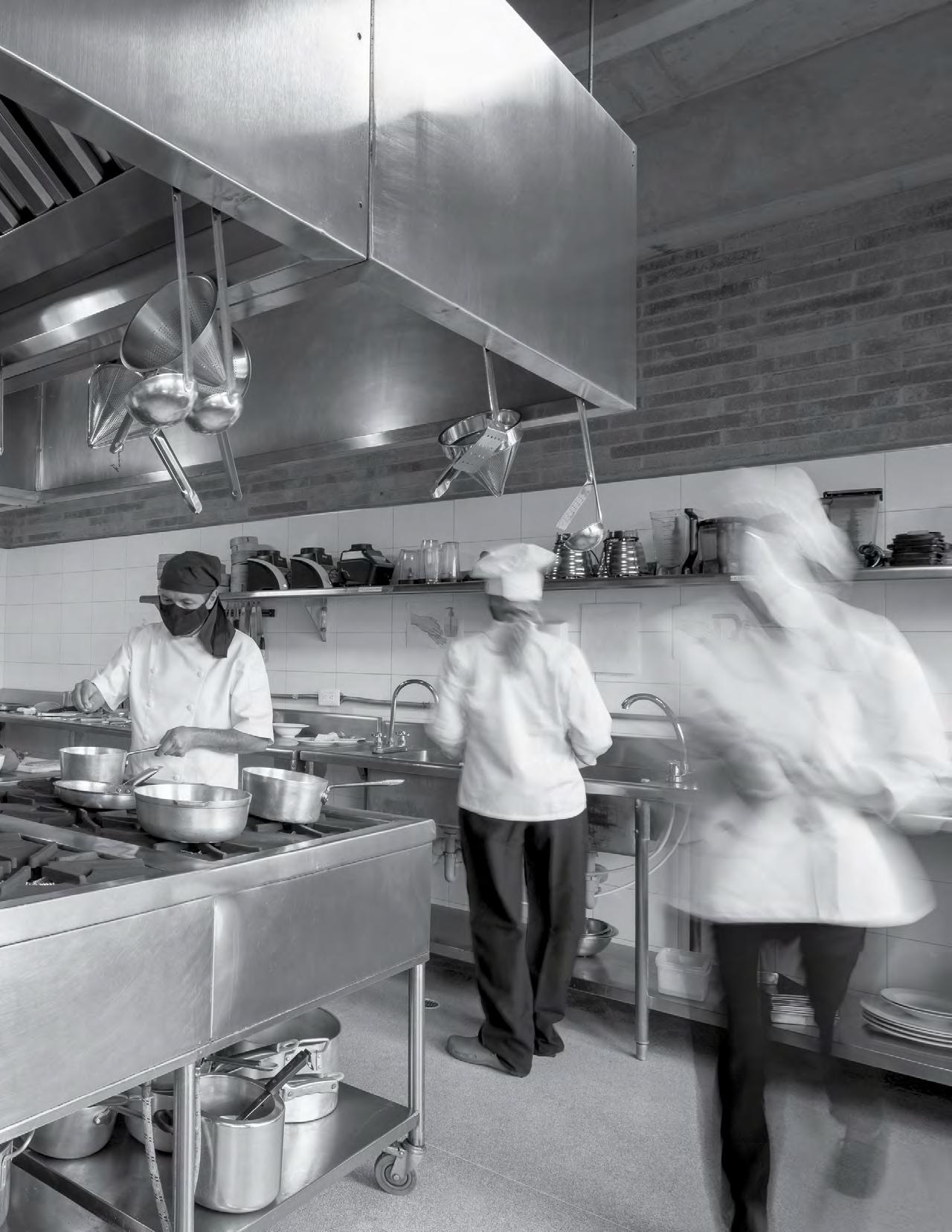
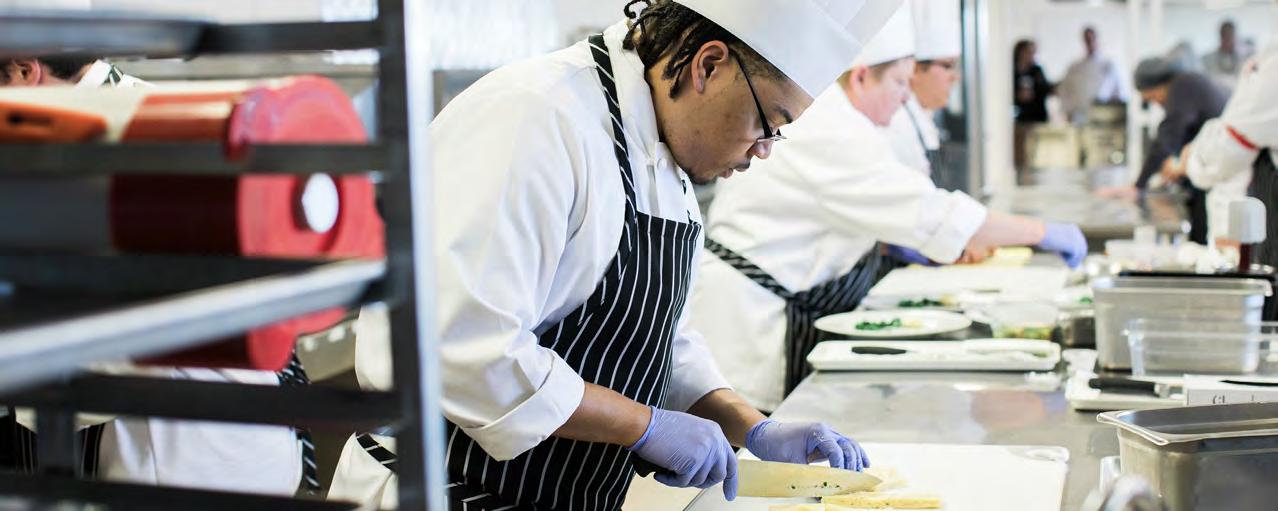





Pastry chefs and ACF members share their favorite tools and ingredients in the kitchen
By Robert WemischnerHow often have you found yourself in this very scenario: You are ready to lay on a skim coat on the first of many cakes for a special order and your favorite 9-inch straight spatula has gone missing. What makes it your favorite, different from any of a number of other spatulas residing in your toolbox or bin? Years of use, perhaps? The perfect ergonomic fit to your hand? The weight of it compared to others? The perfect degree of flexibility (or lack thereof) of its metal blade? The slightly worn-down feel of its wooden handle? Here’s a look at some of the tools preferred by these ACF chefs and why.
“I absolutely love my 7-inch straight spatula for many jobs in my gluten-free bakery. It has one side sharpened like a knife and so is doubly useful in the kitchen. And if I had to name one other small tool, it would be my palette knife with a handle that exactly matches the size of my palm. I’d be lost if that one went missing.” –Chef Chrissy Jensen, CEPC, owner, The Dotted Lime, Columbia, Tennessee
“I can’t do without my bowl knife. It is a dull-edged, round-ended metal spatula shaped to cleanly remove the contents of a bowl.” –Chef John Griffin, CEC, CEPC, Griffin Culinary Consultants, New York
“My toolbox contains many useful items, from a small digital scale to weigh out those crucial amounts of leavening, salt or thickening powders, to plating tweezers.” –Chef Stephanie Charns, CEC, CWPC, food marketing and product innovation consultant
“My immersion blenders, both industrial-sized and small handheld versions, are my best friends in the kitchen. Whether I’m completing a fruit coulis, emulsifying a ganache or cremeux, or even aerating eggs for a cake batter, I reach for an immersion blender every time. They’re put through their paces in my kitchen.”–ACF Chef Lasheeda Perry, founder/owner, Queen of Flavor
“For easy cleanup, I reach for my rubber pie mat imprinted with clear, reliable measurement markings. Non-slip and easy to store, this pastry mat makes life in the kitchen a breeze. No. 2 on my short list would be a silicone heatproof flexible spatula for those frequent occasions when melting butter and chocolate together or stirring hot cream into caramelized molten sugar.” –Chef Jessie Sheehan, author of “Snackable Bakes” and two other books
“No kitchen can ever have enough sturdy heatproof stainless steel bowls in a variety of sizes, extra sets of measuring cups for dry and wet ingredients, measuring spoons, whisks and spatulas.” –ACF Chef Fran Costigan, author of“Vegan Chocolate: Unapologetically Luscious and Decadent DairyFree Desserts”
These pastry chefs and ACF members talk about their favorite pastry ingredients. Take a look.
“This is a no-brainer. In the world of dark chocolate, high percentage, fair trade, organic, gluten-free and raw tick all the boxes for my chocolate desserts.”
– ACF Chef Fran Costigan
MARSHMALLOWS
These are Chef Jessie Sheehan’s secret weapon. She uses them for her “extremely special whipped cream” and as a stabilizer, sweetener and thickener for fillings and toppings.
Chef Chrissy Jensen, CEPC , reaches for a variety of gluten-free flours and starches to create her own fine-tuned blends. “Getting just the right amount of fiber and starch has been the key to creating products that are unrecognizable as gluten-free. That has been the triumph,” she says, noting that even a panel of ACF judges evaluating her work for her CEPC test had no idea that the dishes she presented were free from gluten.
CITRUS
“From yuzu to calamansi and lime to orange, citrus of all kinds is for the pastry world like salt is for savory. I’d be lost without that broad range of flavor notes and necessary acidity that these ingredients lend to a dish.”
–ACF Chef Lasheeda Perry
 By Susanne Ebacher-Grier, chair, ACF DEI Task Force
By Susanne Ebacher-Grier, chair, ACF DEI Task Force
You may have heard the terms neurodiversity or neurodivergent recently. Harvard Medical School defines neurodiversity as the idea that people experience and interact with the world around them in many different ways — and that there is no one right way of thinking, learning or behaving. The word is often used in the context of autism spectrum disorder (ASD), as well as other neurological or developmental conditions such as ADHD or learning disabilities.
Neurodiversity is not a new term. It was created in the 90s but has caught on more recently, perhaps as our collective awareness around diversity, equity and inclusion (DEI) continues to grow.
That’s been the goal of ACF’s DEI Task Force, for which I currently serve as chair. The task force not only focuses on race, gender and sexual orientation but also celebrates neurodiversity in the hospitality industry. A neurodivergent learner — be it someone diagnosed with ADHD, learning disabilities or autism — doesn't deserve microaggressions from anyone or any institution. Negative terms and microaggressions add up — enough to create a very hostile environment. It’s our job as chefs and leaders to work to overcome these problems if we expect our industry to move forward and recruit and retain talent.
Through education and awareness, we can continue to work to create safe spaces and be more aware of any implicit biases we might have.
Allow me to present an example of a microaggression, or something that contributes to a hostile work environment. Before I got into teaching, I worked as an executive chef for a business dining services company; I had a line cook who was very reliable
"SHOWING EXCELLENCE MEANS BEING A LEADER IN THE KITCHEN AND CREATING A WELCOMING WORKPLACE FOR ALL."
and worked extremely hard. But every time there was a storm, he would become very afraid and have to calm himself down — and all the other cooks made fun of him for it. They did this instead of saying, “Hey I’m concerned, are you OK?”
It's no surprise that there is a high percentage of neurodivergent individuals, particularly those diagnosed with ADHD, in kitchens. It’s a fast-paced, high-energy environment where people with ADHD can thrive. You need to think fast and handle multiple tasks at once, so ADHD can be a huge asset in cooking and hospitality. As a neurodivergent learner myself, kitchens are where I found home. I wasn’t weird; I could put my ADHD to use. When good leaders can recognize and understand that strength, that’s a win-win for both the kitchen and the employee.
Let me give you another example. While working as a corporate chef , I had a dishwasher with Down syndrome. He was assigned a job coach who would periodically check on him. The employee came in and did a single task: washing dishes. It gave him purpose and a stable routine and paycheck. And we had a very loyal, reliable employee.
Here's another one: I had a student three years ago who was diagnosed with intellectual disabilities but had an incredible passion for baking. I was teaching my students how to scale a recipe, and many of the neurotypical kids couldn’t figure it out; meanwhile, this kid is rocking it. Once he mastered his recipes, he could do them over and over again. I worked with him to get a job in the area but initially had some trouble placing him. One chef was afraid of potential product loss or any extra training that might be required. Luckily I found a compassionate chef who welcomed my student with open arms and was able to tackle any challenges with the assistance of a job coach.
Sick of my examples yet? Well, here’s another one: When I was an executive chef in Louisville in my mid- to late-20s, I had a gentleman in his 50s who ran the deli at the account I was at. We had what I thought were simple production sheets that needed to be filled out each day; he wouldn’t fill them out. I tried to be caring and compassionate and gently asked him if I could help with the task or what he needed to get it done. He said, “Chef, I can’t read.” He was someone who came into work every day on time and worked hard. I had to create a safe space for him and help him get the work done. So, I incorporated some pictures on his production sheets (a pig for ham, a turkey for turkey) and had him turn in his sheets to me personally. It worked out really well.
So what’s the benefit to creating a safe, inclusive and equal workplace for neurodivergent employees? Other than feeling good about yourself and sleeping well at night? You’ll get a bigger workforce and labor pool from which to choose. If you educate yourself and take advantage of job coaches and social services, you’ll be able to utilize your staff’s talents and put people in the right positions. COVID-19 really was the great equalizer. The hospitality industry is experiencing a major workforce crisis, and if we don’t expand our self-awareness and look within in order to look out, we can’t and won’t change. If we don’t change, how can we as ACF chefs expect to continue setting the standard of excellence in our industry? Showing excellence means being a leader in the kitchen and creating a welcoming workplace for all. That’s the ACF mission.
ACF Chef Susanne Ebacher-Grier has been a culinary educator for 15 years. She currently serves as a culinary arts instructor at Center Grove High School in Greenwood, Indiana. Prior to education, Chef Ebacher-Grier worked in the corporate dining segment as an executive chef with Aramark, and she has spent time in retail, working as a chef for Kroger, and in catering. She is a past president and currently an active member of the ACF Greater Indianapolis chapter, and serves as chair of ACF’s Diversity, Equity and Inclusion Task Force.

ACF’s Childhood Nutrition Day is celebrated on .
a. September 14
b. September 30
c. October 1
d. October 16
Which of the following is NOT an ingredient that is common in both Vietnamese and Latin cuisines?
a. Mangos
b. Co rn
c. Pecans
d. Plantains
What is lomo saltado?
a. A Peruvian beef dish

b. A Colombian soup
c. A f ish sauce
d. A gr illed papaya dish
Titote is a Colombian caramelized concentrate.
a. onion
b. maple
c. coconut
d. banana
More than half of all foodborne illness outbreaks in the United States are associated with restaurants.
a. Tr ue
b. Fa lse
What is mofongo?

a. A traditional Puerto Rican dish
b. A d ish made from fried plantains smashed with pork and garlic
c. An iconic dish celebrated on September 24
d. A ll of the above
What percentage of consumers surveyed have said they would not return to a restaurant that experienced a safety incident?
a. 15%
b. 25%
c. 45%
d . 50%
What is the national dish of the Philippines?
a. A fritada
b. Adobo
c. Picadillo
d. Biko
Mofongo evolved from the dish fufu.
a. Mexican
b. A frican
c. Chinese
d. Brazilian
For over 200 years, it’s been our mission to produce the world’s finest tableware for the makers of drinks, the makers of food, and the makers of memories.




